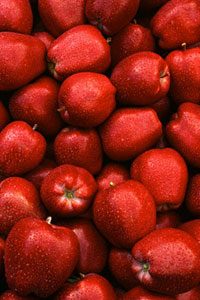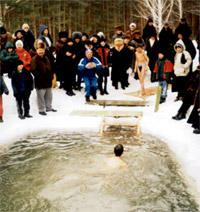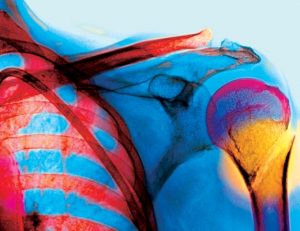Venipuncture
 Intravenous administration is carried out by venipuncture and venesection. Venipuncture is the introduction of a needle into a vein through the skin to draw blood or inject medicinal solutions, blood, blood substitutes.
Intravenous administration is carried out by venipuncture and venesection. Venipuncture is the introduction of a needle into a vein through the skin to draw blood or inject medicinal solutions, blood, blood substitutes.
Intravenous infusion is usually performed in the vein of the elbow. Place the intended injection should be carefully treated with alcohol.Above the elbow bend on the middle third of the shoulder impose a tourniquet or any rubber tube so as to cause swelling of the veins, it is important not to squeeze the arteries.
Put the harness so that it can be easily dissolved.
To enhance venous stagnation, the patient is offered to squeeze and unclench his fist several times or lower his arm before applying the tourniquet.
During the procedure, the patient is sitting or lying down. His hand should lie on a table or bed in the position of maximum extension in the elbow joint; To do this, they place a flat pillow or towel under the arm, covered with a sterile napkin or a clean towel.
Intravenous administration is carried out either by a doctor or a specially trained nurse. For intravenous infusions it is necessary to have a syringe with a capacity of 10-20 ml with a well-chosen needle, carefully sterilized. It is necessary to follow all the rules of asepsis. It is only necessary to inject the medicine intravenously and take blood for research with rubber gloves (according to order No. 408 of 1.2.89 “On measures to reduce the incidence of viral hepatitis in the country”).
For intravenous fluids used sterile clear solutions. The dosage with this method of administration is somewhat different from the dosage with subcutaneous injection, and the introduction of potent agents is always slow.
Before typing the solution into the syringe, to avoid errors, the nurse must check whether the solution was taken, the date of manufacture and dosage, the presence or absence of contraindications for the patient, the presence of an allergic predisposition in the patient. Such a check is necessary because there are cases when poisonous substances, non-sterile, concentrated solutions, suspensions or oil solutions were injected into a vein due to the carelessness of medical personnel, after which the patient’s condition worsened until his death. Such actions are illegal and punishable.
Only an experienced nurse should conduct inhaled infusions. There are tools that can only be administered intravenously – these are hypertonic solutions (40% glucose solution, 10% calcium chloride solution, etc.). High concentrations of drugs and hypertonic solutions are rather rapidly diluted with blood and do not have a harmful effect when administered intravenously to the vascular wall and adjacent tissues. Because of the danger of necrosis, they should not be administered subcutaneously or intravenously.
The solution in the syringe is drawn directly from the ampoules through a large-diameter needle. It is necessary to remove all air bubbles that may be in the syringe. Holding the syringe vertically with the needle up, pulling the piston off collects small bubbles into larger ones and remove them through the needle during internal infusions.
Even small amounts of air should be introduced into the blood due to the danger of an air embolus.
With intravenous administration, some caution should be exercised: before administering the drug, you must make sure that the needle is in a vein; ingestion of the medicinal substance in the near-venous space may be accompanied by severe irritation, up to and including tissue necrosis. Some drugs, such as cardiac glycosides, are administered very slowly, since a rapid increase in their concentration in the blood can be dangerous for the life of the patient.
For slow infusion of low-density liquids (saline solutions or glucose) thin needles are used, with the introduction of viscous liquids (blood, polyglucin, protein hydrolysates) – needles with large diameter (for example, Dyufo needle). Currently, there are needles that provide multiple access to the peripheral vein for the implementation of intravenous drip or jet infusions.
The single-step method of venipuncture requires a lot of skill. At the same time, the skin is pierced over the vein and at the same time the acute angle between the needle and the skin decreases during the puncture. Advance into the vein after being hit is performed when the needle is positioned almost parallel to the skin.
Beginners better use the two-step method. Holding the needle with the right hand, cut up parallel to the intended vein and at an acute angle to the skin, a puncture is made – the needle will lie down next to the vein and parallel to it, then a vein is punctured to the side. It creates a feeling of failure in the void. If the needle is in a vein, blood will flow. If there is no blood, then without removing the needles to from the skin, it is advanced a few millimeters into 1 vein, fixing it in this position.
Complications can occur in the form of piercing two vein walls with hematoma formation, erroneous puncture of the artery, damage to the median nerve in the ulnar fossa, phlebitis and vein thrombosis with multiple venipuncture.





